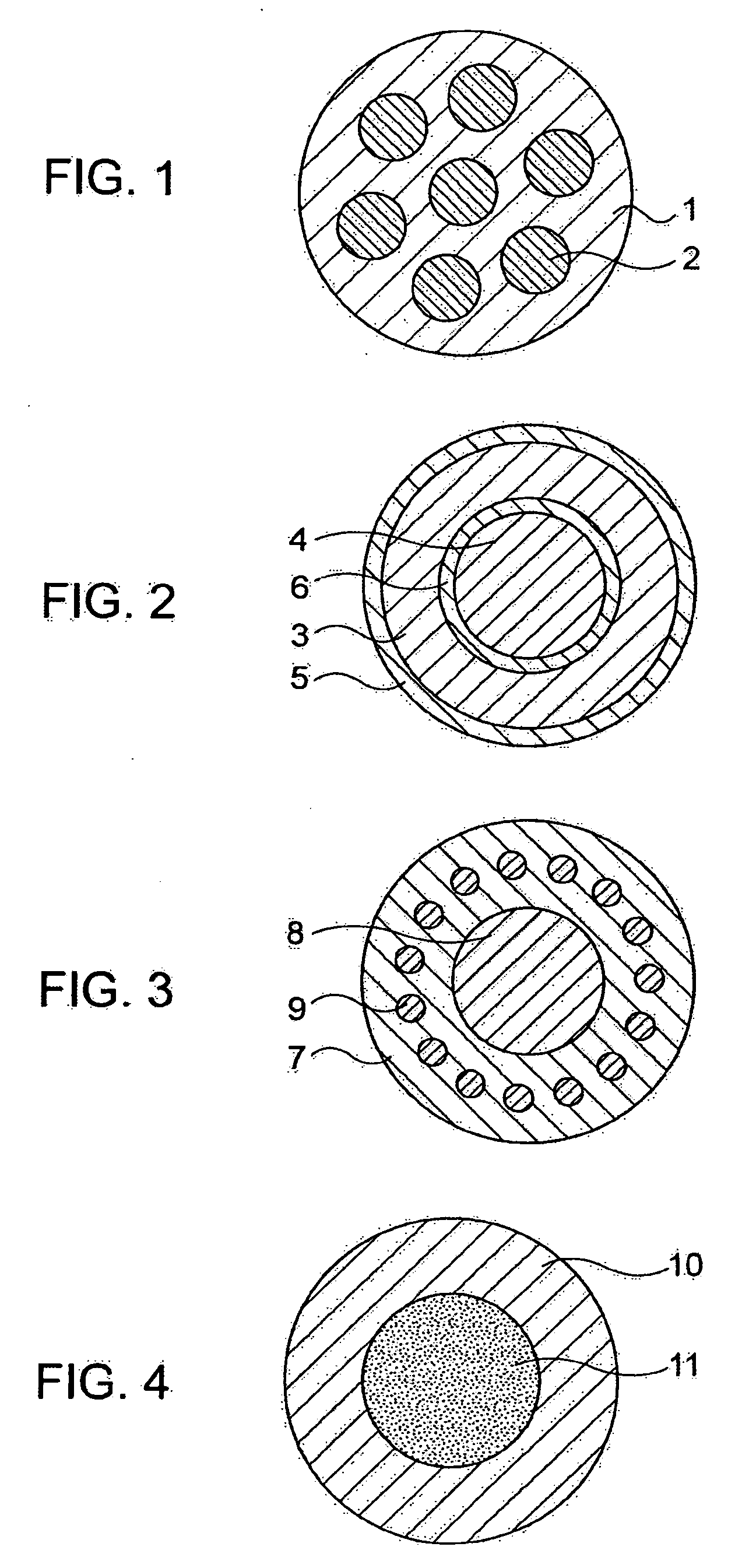Nb-Based Rod Material for Producing Superconducting Wire Material and Method of Producing Nb3Sn Superconducting Wire Material
a technology of nb-based rods and wires, which is applied in the direction of superconductors/hyperconductors, superconductors, electrical devices, etc., can solve the problems of reducing the critical current density (jc), reducing the workability of elements, and reducing the workability of nb or a nb-based alloy, etc., to achieve satisfactory workability and satisfactory superconductivity characteristics
- Summary
- Abstract
- Description
- Claims
- Application Information
AI Technical Summary
Benefits of technology
Problems solved by technology
Method used
Image
Examples
example 1
[0039]Niobium (Nb) rods are produced by casting using a cylindrical casting mold having an inner diameter of 300 mm and then rolled under the following condition (A) or condition (B) until the final diameter of the rods is reduced to 14 mm.
(A) 4-pass hot rolling is performed using a rolling mill in which the rolling cross-sectional shape is a circle, and 4-pass hot rolling is then performed using a rolling mill in which the rolling cross-sectional shape is an ellipse.
(B) 4-pass hot rolling is performed using a rolling mill in which the rolling cross-sectional shape is a circle.
[0040]In both a Nb rod obtained under condition (A) (hereinafter referred to as “Nb rod A”) and a Nb rod obtained under condition (B) (hereinafter referred to as “Nb rod B”), the concentration of inevitable impurities can be reduced by controlling conditions for melting by means of an electron beam (EB). More specifically, the intensity of the beam, the cross-sectional area of the beam, the output of the beam ...
example 2
[0052]Niobium (Nb)-7.5 mass % Ta alloy rods are produced by casting using a cylindrical casting mold having an inner diameter of 300 mm and then rolled under the following condition (C) or condition (D) until the final diameter is reduced to 55 mm.
(C) 4-pass hot rolling is performed using a rolling mill in which the rolling cross-sectional shape is a circle, and 4-pass hot rolling is then performed using a rolling mill in which the rolling cross-sectional shape is a rectangle (Nb-based alloy rod C).
(D) 4-pass hot rolling is performed using a rolling mill in which the rolling cross-sectional shape is a circle (Nb-based alloy rod D).
[0053]In both a Nb rod obtained under condition (C) (hereinafter referred to as “Nb-based alloy rod C”) and a Nb rod obtained under condition (D) (hereinafter referred to as “Nb-based alloy rod D”), the concentration of inevitable impurities can be reduced by controlling conditions for melting by means of EB. More specifically, the concentration of C is re...
PUM
| Property | Measurement | Unit |
|---|---|---|
| crystal grain size | aaaaa | aaaaa |
| average crystal grain size | aaaaa | aaaaa |
| grain size | aaaaa | aaaaa |
Abstract
Description
Claims
Application Information
 Login to View More
Login to View More - R&D
- Intellectual Property
- Life Sciences
- Materials
- Tech Scout
- Unparalleled Data Quality
- Higher Quality Content
- 60% Fewer Hallucinations
Browse by: Latest US Patents, China's latest patents, Technical Efficacy Thesaurus, Application Domain, Technology Topic, Popular Technical Reports.
© 2025 PatSnap. All rights reserved.Legal|Privacy policy|Modern Slavery Act Transparency Statement|Sitemap|About US| Contact US: help@patsnap.com

